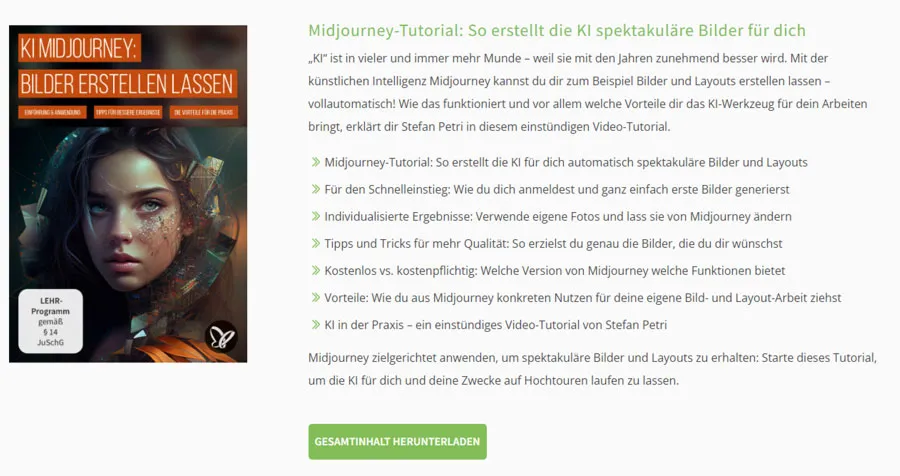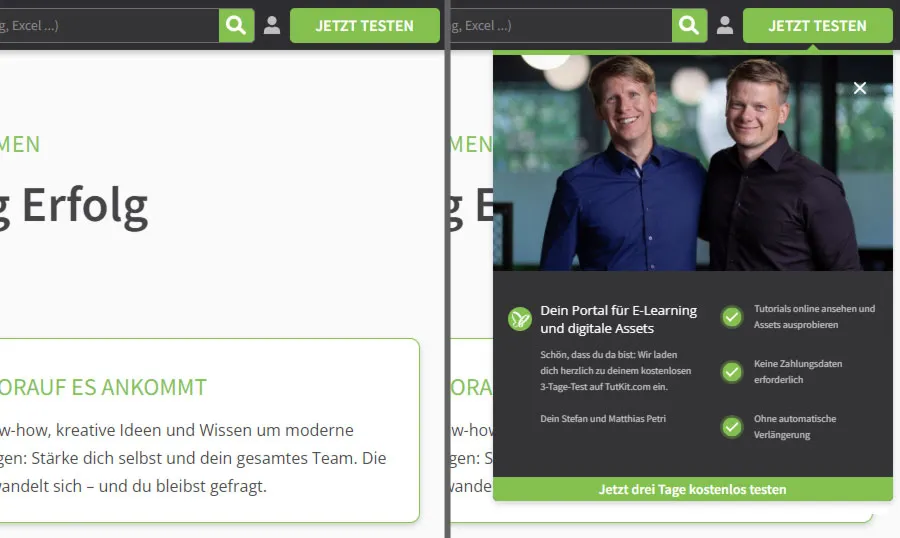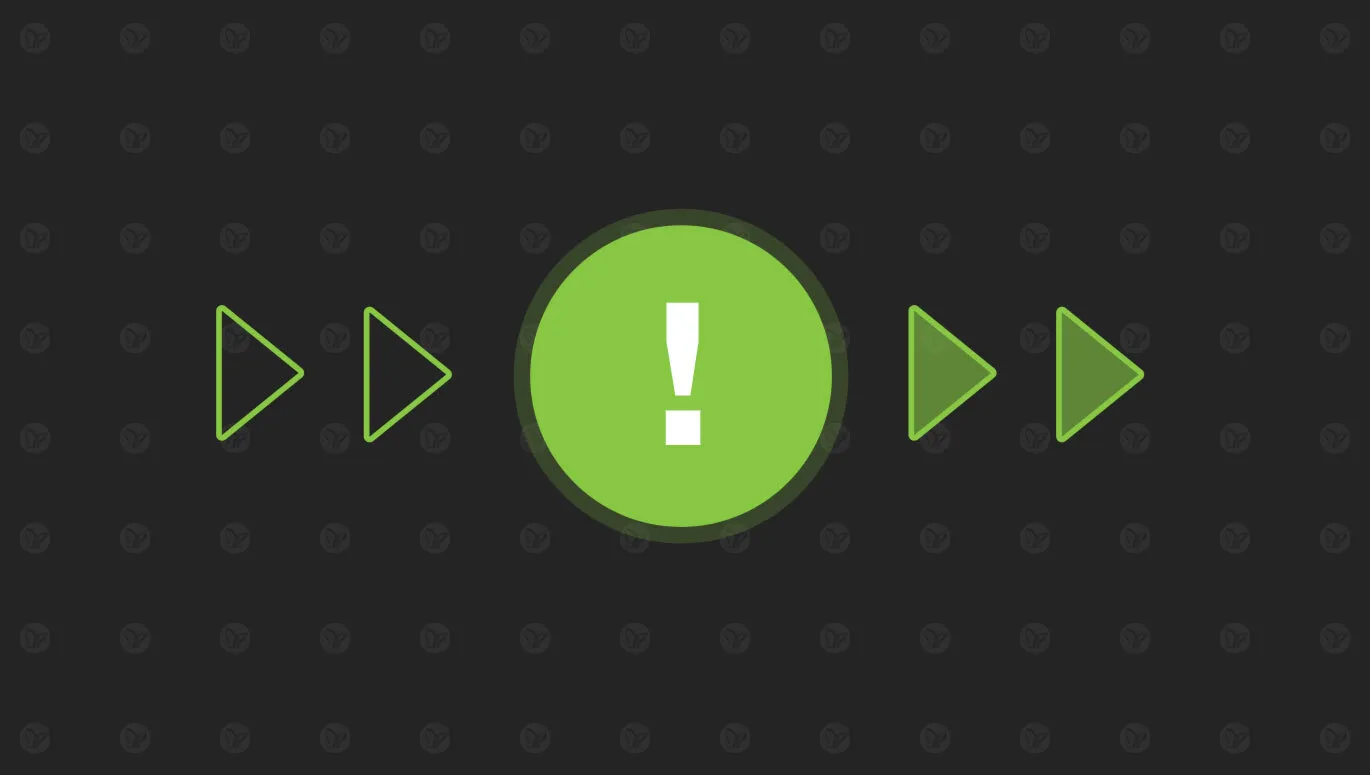You are surfing comfortably through the worldwide web and are supposed to do everything immediately and at once via call-to-action: "Call now", "Order now", "Apply now". But what is this action hero actually all about? Why is the call-to-action so important? Why can it sometimes be a real turn-off? And what opportunities does it open up for you? In our blog post, we want to take a look behind the scenes of the mysterious call-to-action and give you tricks, practical tips and examples for your own creation.
Call-to-action? What's that?
Ordering a pizza at the tap of a finger or reading an article, being guided to product information in an online store or activating a download ... wherever we go digitally, we encounter small instructions for action - so-called call-to-actions . They call out to us on buttons, as text or as a link. They tell us what we should do next. Or rather, what we can do. Because remember: call-to-actions are a sensitive matter and should never simply demand, but invite. Who wants to be forced to do anything?

Call-to-action: your small, big call for the decisive click
Imagine you're buying a new jacket in the store around the corner. You know what you have to do - even without anyone asking you to do anything. You try it on, raise your thumb in the mirror and go to the checkout.
The digital world means we move a little differently. We read texts, see pictures and videos and sometimes wouldn't know what to do where without a specific to-do. Adding a product to the shopping cart with a button is just as helpful as a clear link to the download.
But a call-to-action is more than just a signpost. It is also a nudge and motivator to get us to perform a certain action. In the digital cosmos, where the abundance of offers sometimes overloads us, it is important that someone tells us what we can do. This is goal-oriented and saves time.
Do you want to successfully sell your offer on the web or invite your customers to do more than just visit your homepage? Then you need a call to action. Otherwise your potential customers will quickly bounce and end up with your competitors.

Where do you use call-to-action?
Whether on a website or in the app - you have a huge range of options for placing a call-to-action that works. For example, you can use it to ...
- ... motivate them to read a teaser.
- ... force the download of a file.
- ... encourage them to subscribe to your newsletter.
- ... refer to your social media channel.
- ... encourage people to buy a product.
- ... lead to further information about your offer.
In addition to its use on your website, the call-to-action also plays a key role on other channels. For targeted marketing, you can use it in emails, podcasts, presentations, social media posts and paid ads, for example.
If you want your users to do what you want them to do, your call to action must be eye-catching and visibly placed. This can be before, in the middle of or after a text, image or video.
Relevant video trainings on the topic of call-to-action
How does your call-to-action become a click trigger?
Whether formulated creatively or conservatively: a call-to-action must clearly state what you want from your users. But it shouldn't sound blatant. Aggressive statements such as "Act now" or "Read on immediately" are off-putting. We would certainly read elsewhere. But how do you write it so that it works? Read our tip starter:
- Formulate your call to action in an attractive and inviting way. This is how you convey trust and sympathy for your brand and your products. We are all human beings with feelings. If what you read sounds emotionless and cold, it will repel you. If it conveys humor or warmth, you are more likely to click. What's more, many users think that there could be a trap lurking somewhere that is pulling a fast one on them, dangling a contract up their leg or simply filling them with spam. That's why trust, continuity and emotionality are important building blocks - even if a call-to-action is probably only two to four words.
- Write the call-to-action in such a way that users know how they will benefit from clicking on it. You probably already know your target group quite well. So only motivate them to do something that will benefit them as well as you.
- Also crucial: the tone of voice. How else do you talk to your visitors? Do you spread hygge warmth or can't it be cool enough for you and your target group? Are you more conservative or do you prefer to spread charming humor? No matter how you get your message across, your call-to-action needs to sound the same. It's often the nuances that make the difference.
- And then there's the way it's worded . Imagine you're standing at the butcher's counter and she says to you: "Get an attractive offer now". The chop would slip out of your hand. Okay, well, on the web we communicate more succinctly and get to the point faster. But you're still talking to people, not machines.
- Speaking of which: don't go too far either. Keep it short, but as I said, speak human.
Example: Instead of "Secure offer now", say "Secure offer? Here you go!" - Say what sets you apart. Uniqueness is attractive - if it doesn't come across as boastful.
Example: "Get to know us as a top dog for game products." - Take the wind of worry out of your sails and create trust.
Example: "Get our newsletter. No spam and no frills." - Say openly how many people use your offer. The more people there are, the greater the trust and the participation effect.
Example: "Subscribe to our podcast. Like 5,000 listeners before you." - Use activating words and motivate people to take action. This way, your users are immediately aware of what they can do.
Example: "Make a reservation now" - Say when you have something free at the start. This is added value that you shouldn't leave under the desk.
Example: "Get our free offer" - Present the call to action visually so that it is not overlooked. Bold it, put it on a clearly visible button or choose a different font and make it bigger.
From our copywriting tutorial: 8 deadly sins in the call-to-action
In his copywriting tutorial, trainer Tobias Becker shows you how to write good advertising copy. Here is a video from the course in which he introduces you to eight deadly sins in call-to-actions:
Creative or conservative: where is which call-to-action useful?
You're probably already thinking it: wherever you ask your users to do important things, you need to communicate clearly and unambiguously. This is especially true when they commit to something. Example: "Place a binding order now." A joke or play on words would be an affront in purely legal terms. But there are other areas where you can use your tone of voice. As I said, always be concise.
Imagine you want your users to subscribe to your newsletter. The window pops up and then it says: "Sign up now!" All you can do is click the checkbox and say goodbye. It's nicer if you surprise your visitors or invite them with a question and communicate the advantage of signing up.
Or when it comes to the topic of further reading. Simply writing "Read more" is as dry as an old cookie. But just by writing "Read more here", you can make it human.
You can even be a little different with the shopping cart. For example: "Add to shopping bag". But be careful: your users are creatures of habit who follow very specific buzzwords. "Shopping cart" is learned. So if you're a little more conservative in your tone of voice anyway, stick to the words you've learned. If your visitors expect wit and humor from you, you can disguise it visually and add a shopping cart icon to the word "shopping bag".
Our call to action: get started
Have our tips inspired you? Then let's get to work on the buttons. Just keep in mind that a call to action, however short it may be, is an important text module. It motivates people to take action. So take your time and write it intelligently instead of using something you've already read everywhere. The time you invest will pay off - in every single click you get. Have fun!

